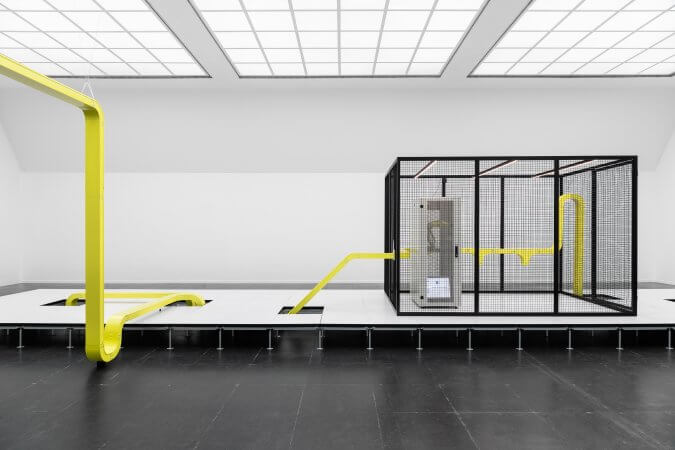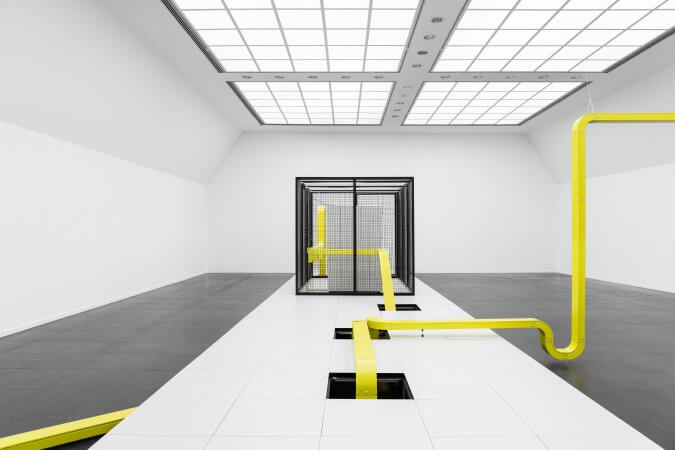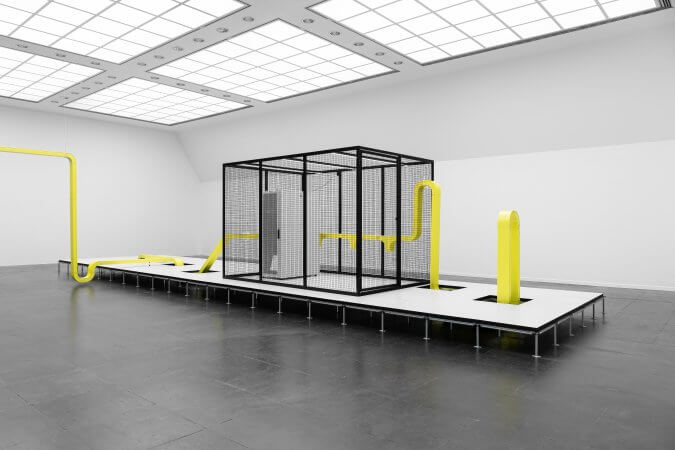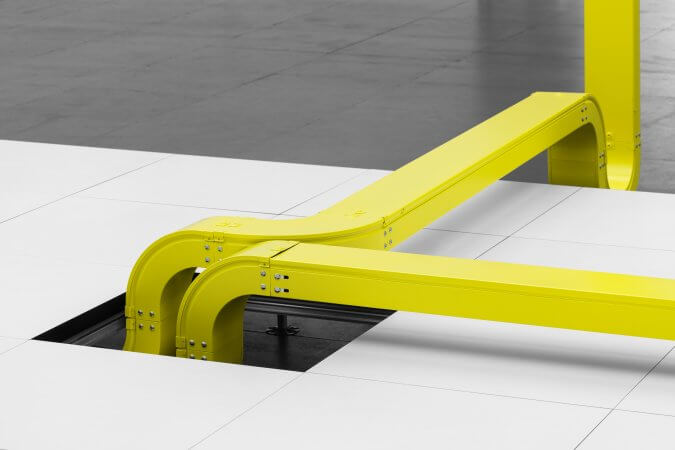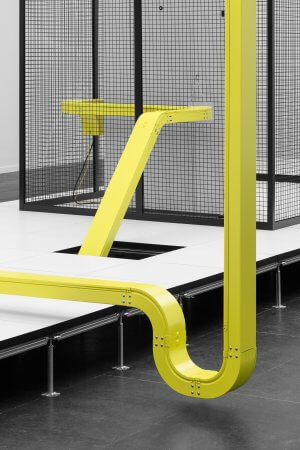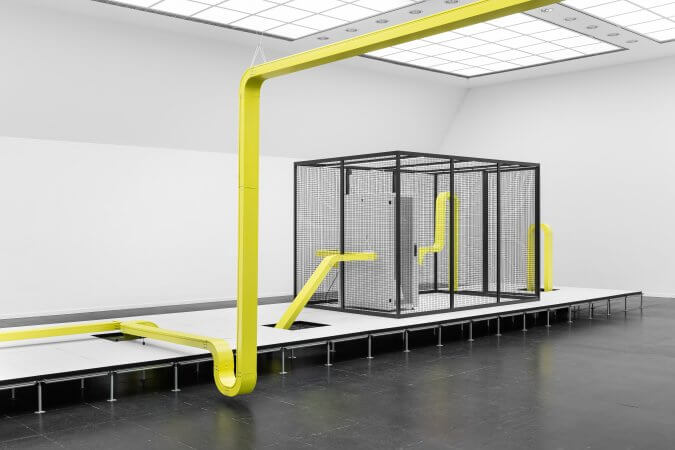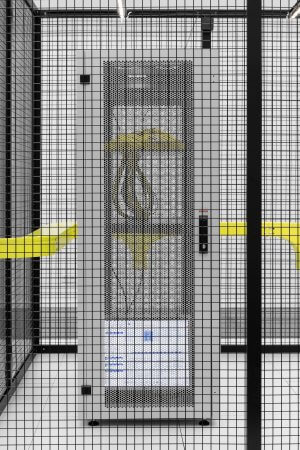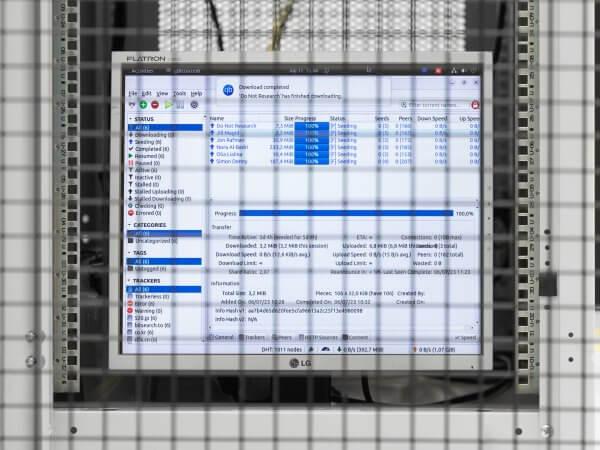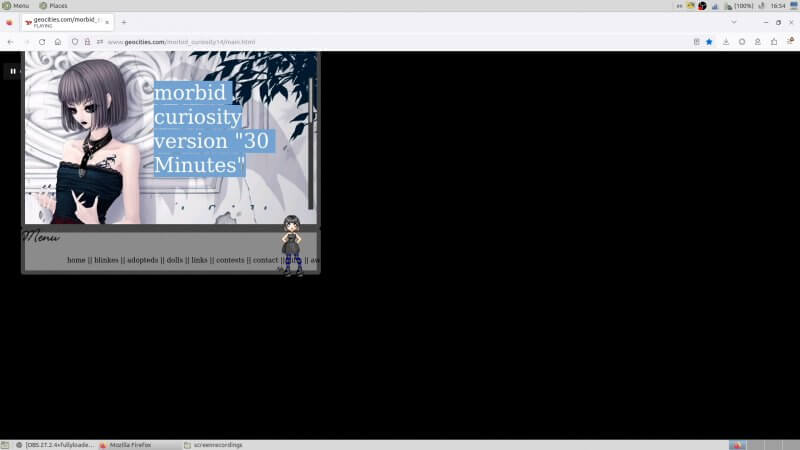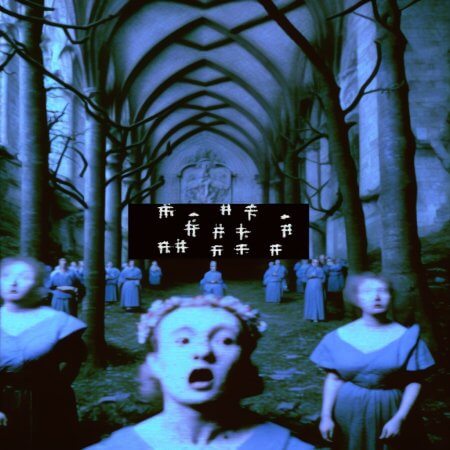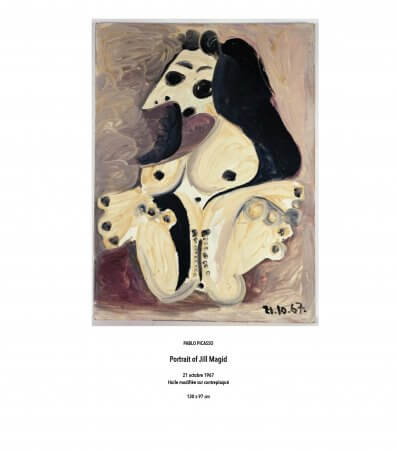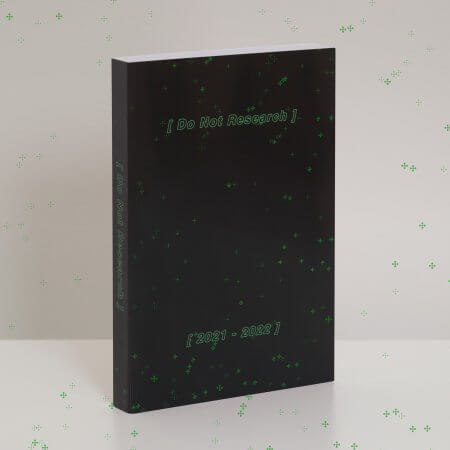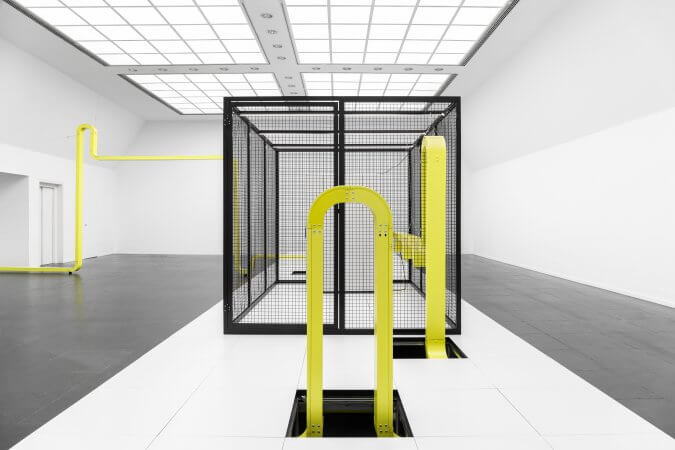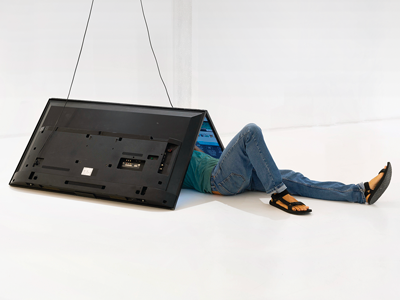P2P, 2023
Server sharing artworks by Nora Al-Badri, Simon Denny, Do Not Research, Olia Lialina, Jill Magid and Jon Rafman through the P2P file sharing network
Server cage, server cabinet, rack server, file, Torrent software, internet connection, neon lights
Dimensions variable
Courtesy the artists and Apalazzo Gallery
To view the works, please visit the website www.peer-to-peer.xyz and follow the instructions.
In the last room of the exhibition tour is the new work P2P. With their installation, Eva & Franco Mattes take as their theme the phenomenon of peer communities that have emerged over the last twenty years for the exchange of works and knowledge. The central element of the installation is a mobile server standing in a grid cage. Its design was developed jointly with the Italian architectural firm Salottobuono and is based on existing data centres, of which Frankfurt has the highest concentration in Europe.
The server is connected to a peer-to-peer network and the internet via the infrastructure of the Frankfurter Kunstverein. It is part of a network in which six digital artworks by Nora Al-Badri, Simon Denny, Do Not Research, Olia Lialina, Jill Magid and Jon Rafman circulate. The six works include choral music supported by Artificial Intelligence, a collective 409-page PDF book created in a Discord channel, a new caption for a famous painting, a screencast of a long-defunct website, a series of animated gifs inspired by tech conferences, and a 3D scan and poster that challenges the colonial notion of ownership. These never before shown works were created by the six international artists for the exhibition at the Frankfurter Kunstverein to be distributed online. They belong to the community around Eva & Franco Mattes, at whose invitation they created the works. The result is an exhibition within the exhibition, one that takes place within the peer-to-peer network community run by the artists. The Frankfurter Kunstverein, and so more generally an art institution, becomes a data centre that hosts and shares content, making it accessible to an extended, global community of users.
For visitors in the Frankfurter Kunstverein, the artworks remain hidden to begin with. The server has no output modules such as monitors or speakers. The only indication of the functioning system are the flashing lights and the noise of the fan. In order to view the works, viewers must join Eva & Franco Mattes’ peer-to-peer network, to which they are invited. In this network, the artworks are distributed across different locations, accessible to all those who become part of the system and actively share the files with others.
Unlike conventional servers, peer-to-peer networks store data in a decentralised way. The networks are anonymous, free from commercial interest, data mining and surveillance. Participants in these communities, known as peers, take part by connecting their computers to the system. This makes them clients and servers at the same time – meaning, users and hosts. They are all authorised to upload files to or download files from the network. They interact with each other on an equal footing by sharing resources such as files, bandwidth or computing power directly with one other. This increases the efficiency of the individual and at the same time the resilience of the system. Peer-to-peer networks are also resistant to failures because there is no single central component that can bring down the entire network. Potentially, the system is infinitely scalable due to the number of new participants.
The peer-to-peer network creates a horizontal structure in which all participants are equal actors. The work P2P contemplates the impact of the digital age on the art world and introduces new possibilities of artistic exchange, distribution and preservation of digital works. Moreover, P2P takes as its theme the value of collaboration, equal access to content and, in the case of Eva & Franco Mattes’ work, to art and the democratisation of the creative process. By hosting the work, the Frankfurter Kunstverein, as a public institution, contributes directly to the dissemination and preservation of art on the internet.
At the same time, the P2P installation stands for the conceptual approach of the artist duo. Content, form and material are mutually dependent. The additional empty space is a common feature that implies further endless expansion to accommodate more data. The monolith in the cage, simultaneously covered and framed, becomes the formal centre of the artworks and proof of the pervasiveness of their content, which invites active and decentralised participation in the torrent network.
What is a peer-to-peer network and how did these distributed work communities come into being? The use of peer-to-peer networks began in the early 2000s. At the same time, technologies like the file-sharing protocol BitTorrent and software like Napster and eDonkey2000 spread. They revolutionised the exchange of digital content, as for the first time they bypassed dependence on centralised servers and bandwidth limitations. For many artists, for example, this meant being able to share their artwork directly with a wide online audience without having to rely on established distribution channels. The technology was groundbreaking in the field of music production especially. A well-known example was the band Radiohead, who offered their album In Rainbows as a free download via their website in 2007 and gave fans the opportunity to set the price themselves.
Parallel to this, peer-to-peer networks were also used for illegal activities such as sharing copyrighted content. The uncontrolled distribution of files led to significant copyright infringements and financial losses for artists and rights holders. At the same time, it toppled the entire music publishing industry, which had to completely rethink its income source as a result. There have been numerous legal battles and restrictions to curb the illegal distribution of content via peer-to-peer networks.
As often the case with the emergence of new technologies, traditional business models come under pressure and others emerge. Peer-to-peer networks have played a significant role in democratising information sharing and creating communities of like-minded people. Peer-to-peer technology has become the foundation of cryptocurrencies and blockchain networks, which once again herald radical change.

